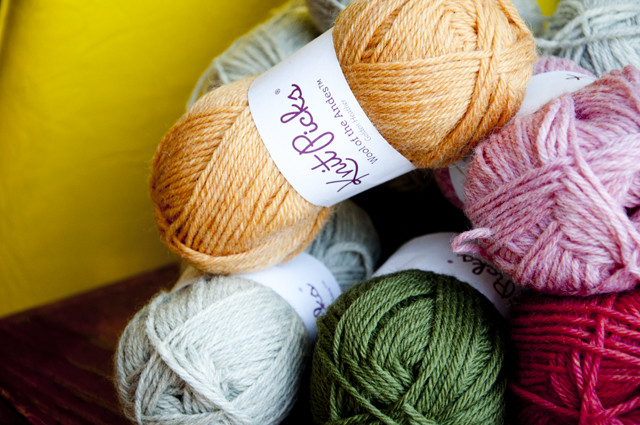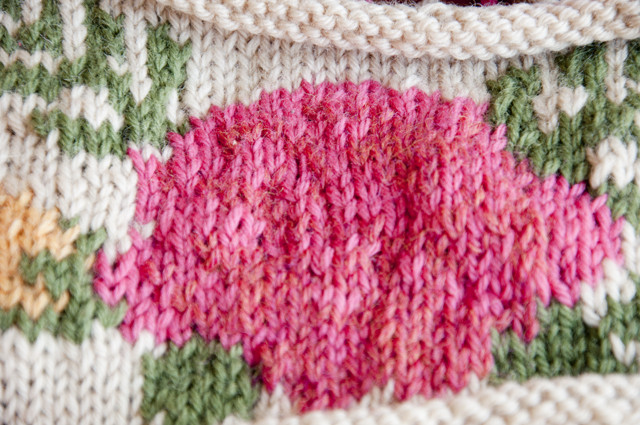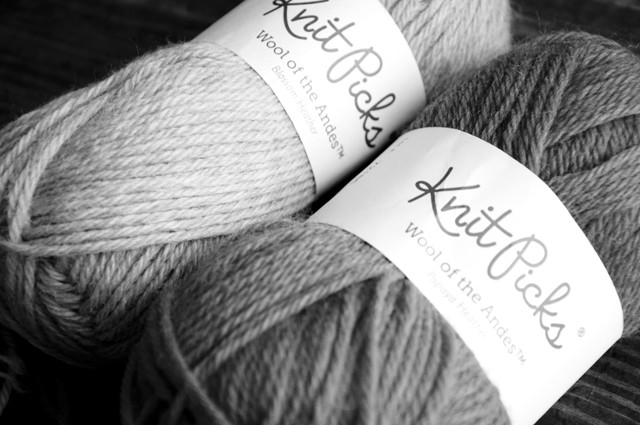When it comes to knitting intarsia, there’s nothing about the technique that requires you to use a specific type of yarn. Long before I even knew what intarsia was called, I knit an intarsia project using chenille yarn, and it didn’t explode in my face. That said, some yarns are easier to work with than others while using this colorwork technique, and some yarns will more easily create an attractive final object than others.

Sticky, woolly wool is the best thing to use for intarsia, just like it’s the best thing to use for stranded colorwork. This stuff isn’t the softest yarn ever, and it’s the kind of yarn that you’d also be drawn to for a felting project. It’s sticky, grippy qualities make finishing work significantly easier because once you adjust a stitch or weave in an end, it more or less “sticks” in place, and finishing is the key element to good looking intarsia. Once you get into more smoothe yarns like superwash wools, plant fibers, and synthetics, it becomes a lot harder to keep your stitches and ends from wiggling around, so I wouldn’t recommend those yarns for your first intarsia project.

The next thing to keep in mind when choosing yarn is the color. The colors can make or break a project, as you can see in this early swatch of the flowers from Nosegay. When it comes to intarsia, you don’t need to worry about the values of your colors as much as you do with stranded colorwork, but the major exception is when you’re using two or more colors to create depth and shading like on this rose. These two shades of pink don’t have enough contrast so my pretty rose ends up just looking like a weird blob.

The easiest way to check to see if you colors have enough contrast is to snap a picture in black and white. If it’s totally clear which is the lighter color and which is the darker color, you shouldn’t have any problems. This picture is of the two shades of pink recommended for Nosegay, Knit Picks Wool of the Andes in Blossom Heather and Papaya Heather. Plenty of contrast!

Leave a Reply to Andi Cancel reply